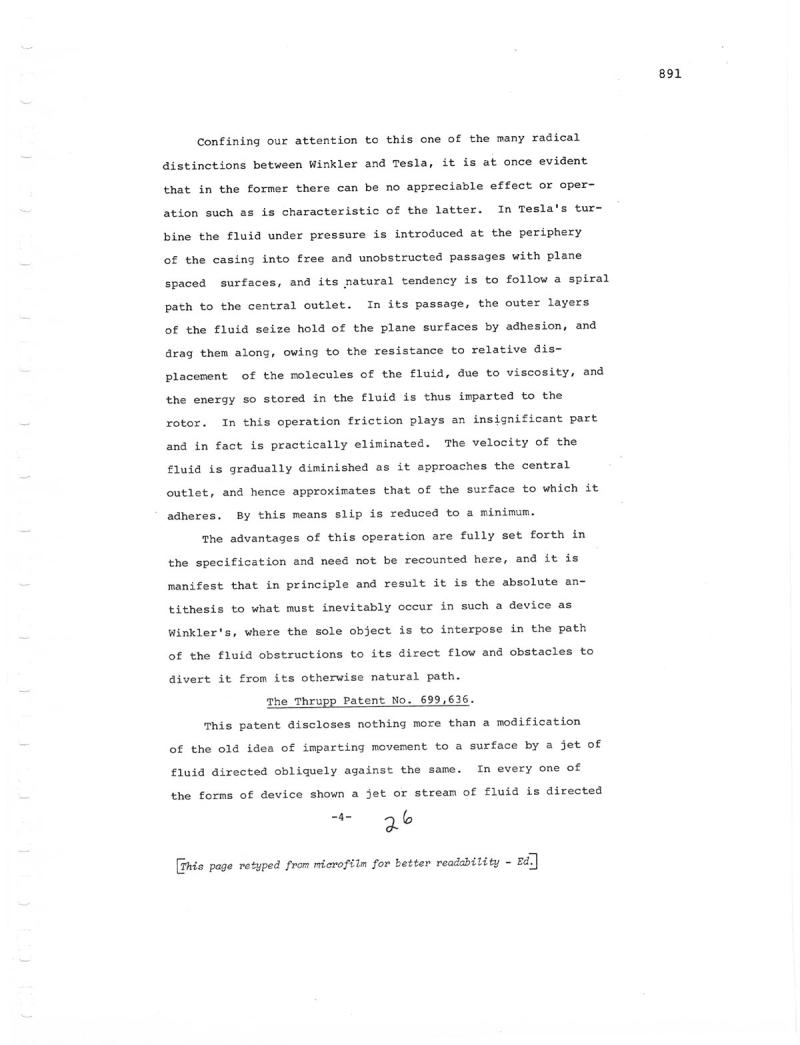
Nikola Tesla Patents
Nikola Tesla U.S. Patent 1,061,206 - Turbine Patent Wrapper Page 27
( 1 Confining our attention to this one of the many radical distinctions between Winkler and Tesla, it is at once evident that in the former there can be no appreciable effect or operIn Tesla's turation such as is characteristic of the latter. bine the fluid under pressure is introduced at the periphery of the casing into free and unobstructed passages with plane spaced. surfaces, and its natural tendency is to follow a spiral path to the central outlet. In its passage, the outer layers of the fluid seize hold of the plane surfaces by adhesion, and drag them along, owing to the resistance to relative displacement of the molecules of the fluid, due to viscosity, and the energy so stored in the fluid is thus imparted to the rotor. In this operation friction plays an insignificant part and in fact is practically eliminated. The velocity of the fluid is gradually diminished as it approaches the central outlet, and hence approximates that of the surface to which it adheres. By this means slip is reduced to a minimum. The advantages of this operation are fully set forth in the specification and need not be recounted here, and it is manifest that in principle and result it is the absolute antithesis to what must inevitably occur in such a device as Winkler's, where the sole object is to interpose in the path of the fluid obstructions to its direct flow and obstacles to divert it from its otherwise natural path. The Thrupp Patent No. 699,636. This patent discloses nothing more than a modification of the old idea of imparting movement to a surface by a jet of fluid directed obliquely against the same. In every one of the forms of device shown a jet or stream of fluid is directed -426 [This page retyped from microfilm for better readability - Ed. 891
